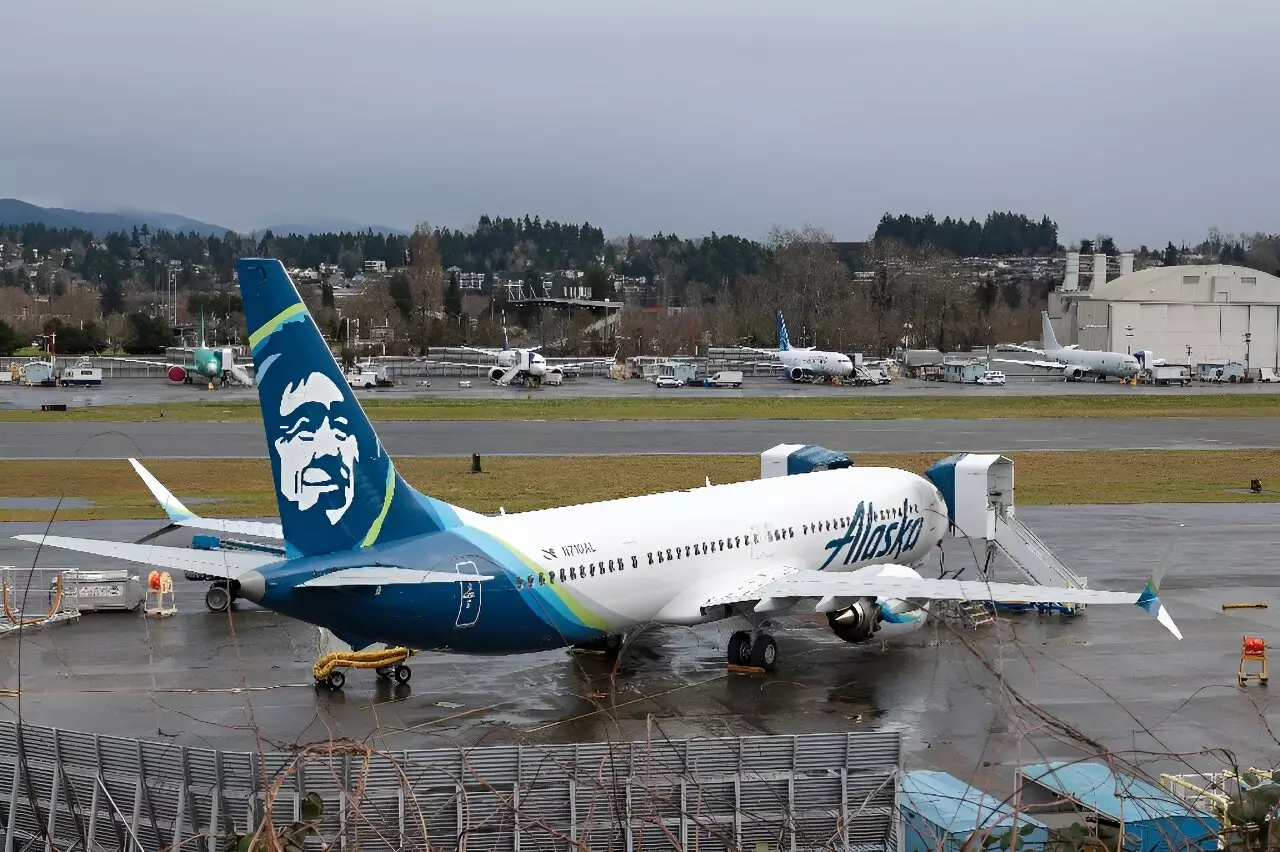Airlines worldwide are grappling with more delays as Boeing, the American aircraft manufacturer, faces yet another crisis. The company’s flagship plane, the 737 MAX, has been plagued by difficulties over the past year, culminating in a major in-flight safety incident on Alaska Airlines in early January. The seriousness of the situation has prompted the Federal Aviation Administration (FAA) to freeze Boeing’s plans for a production increase through 2025. This setback will undoubtedly further disrupt Boeing’s already behind-schedule delivery timetable.
While Airbus, Boeing’s European competitor, has managed to avoid similar safety troubles, it is also grappling with its own supply chain woes. The company is currently dealing with issues related to engines manufactured by Pratt & Whitney, a unit of RTX. To ensure safety, hundreds of Airbus 320neo jets must be inspected between 2023 and 2026 for microscopic “contamination” of metals used in the engines. These inspections and any necessary engine fixes require an extensive timeframe of 250 to 300 days per aircraft, creating yet another obstacle for airlines keen on meeting the growing demand for air travel.
The ongoing challenges faced by both Boeing and Airbus have left some of their customers considering alternative options. For example, Alaska Airlines, which has primarily relied on Boeing for its fleet, had been considering orders of the Boeing 737 MAX 10 prior to the recent incident. However, with the pending acquisition of Hawaiian Airlines, which primarily uses Airbus planes, Alaska CEO Ben Minicucci has hinted at the possibility of diversifying their aircraft suppliers. According to Minicucci, “Everything is open at this point…We are going to do what is best for Alaska.”
Despite the potential for customers to switch suppliers, changing plane manufacturers is not a straightforward process. Airlines must secure a spot in the order books of manufacturers, who need to prepare their supply chains to fulfill multi-plane orders over extended periods. This logistical challenge is currently exacerbated by the scarce availability of order slots and production capacity. Airbus, for example, has its production infrastructure fully booked through 2030 for single-aisle planes like the A320 and through 2028 for long-distance jets such as the A350. This limitation has compelled airlines to sign contracts for jets that may not be delivered for several years.
Despite the supply chain limitations, Airbus continues to experience a surge in orders. In 2023 alone, the European aircraft manufacturer received net new orders of 2,094 planes, surpassing the previous record set a decade earlier at 1,503. Many airlines are seeking to renew their fleets to meet emission targets set for 2050, a period when global air travel is projected to double. Airbus aims to increase A320 production to 75 planes per month by 2026, up from 48 monthly planes in 2023. This ambitious plan highlights the sustained demand for Airbus aircraft.
Meanwhile, Boeing faces ongoing scrutiny and challenges in the wake of the 737 MAX crisis. Besides lingering concerns about quality control following the Alaska Airlines incident, the company is yet to receive certification for the 737 MAX 7 and 737 MAX 10 models, representing the smallest and largest versions of the single-aisle aircraft. With 391 orders for the MAX 7 and 1,180 for the MAX 10, Boeing’s inability to provide a clear timeframe for deliveries has prompted airlines to readjust their schedules. Despite having a robust order book with over 4,000 orders for the MAX program out of a total of 5,626 plane orders, the next available order slots for 737s are not expected until the end of the decade.
The ongoing supply chain constraints for both Boeing and Airbus stem from the persistent impact of the pandemic on logistics. Christopher Raite, a senior analyst at Third Bridge, highlights the limited availability of critical metals from Russia and Ukraine as contributing factors to the supply chain constraints. Raite explains that the current supply chain is insufficient to support the required production ramp-up. These challenges force airlines to consider alternative solutions if they are unable to obtain planes in a timely manner from either Boeing or Airbus.
One potential solution for airlines facing delays in plane deliveries is to explore aircraft rental options. Michel Merluzeau, an aeronautics specialist at consulting firm AIR, suggests that renting jets could be a feasible strategy to mitigate disruptions caused by supply chain constraints. This alternative could provide airlines with the flexibility to meet travel demands while awaiting the availability of new aircraft from manufacturers.
In the face of the Boeing crisis and ongoing supply chain constraints, both Boeing and Airbus have a challenging road ahead. The pressure to meet increasing demand for air travel combined with disruptions caused by safety concerns and manufacturing difficulties test the resilience of these aerospace giants. As they navigate these obstacles, airlines must carefully consider their options and prioritize reliability and safety to ensure a seamless experience for passengers. The future of the aviation industry relies on the ability of manufacturers to address these critical issues and adapt to the changing landscape of air travel.


Leave a Reply